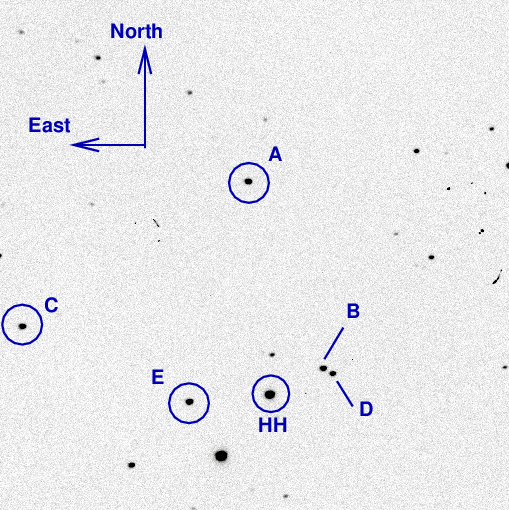
On the night of June 2/3, 2015, Kaitlin Schmidt and I observed the eclipsing contact binary star HH UMa.
In addition to this little observing project, some students came to the observatory to learn how to operate the equipment.
Undergraduate student Tevfik Ozkaynak came to help out with the observing. He's come out a number of times to help me during long observing runs.
The main setup was:
Notes from the night
This object is a nice eclipsing binary star with a continuously varying light curve; a number of papers describing it provide many details, including a period of 0.375494 days = 9.01 hours.
Here's a chart of the field of HH UMa which is at
RA = 11:04:48.1 Dec = +35:36:27 (J2000)
The chart is about 12x12 arcminutes.

Among the labelled stars is
A UCAC4 629-045393 V = 12.721
The bright star to the south of HH UMa and "E", BD +36 2151, is slightly saturated in these unfiltered 20-second images.
Below is a graph showing the sky brightness as a function of time during the observing run. The brief dip was caused when we closed the dome slit, then re-opened it to position the panel at the top location. No evidence for clouds.

Below is a graph showing the FWHM as a function of time during the observing run.

I used 20-second exposures during this observing run. The target had about 16,000 peak counts/2 with this exposure time, which is a nice, high level.
Using aperture photometry with a radius of 4 pixels (radius of 5.7 arcsec), I measured the instrumental magnitudes of a number of reference stars and the target. Following the procedures outlined by Kent Honeycutt's article on inhomogeneous ensemble photometry, I used all stars available in each image to define a reference frame, and measured each star against this frame.
Sigma-vs-mag plot: The brightest star is the saturated BD +36 2151, and the second-brightest star is the target.
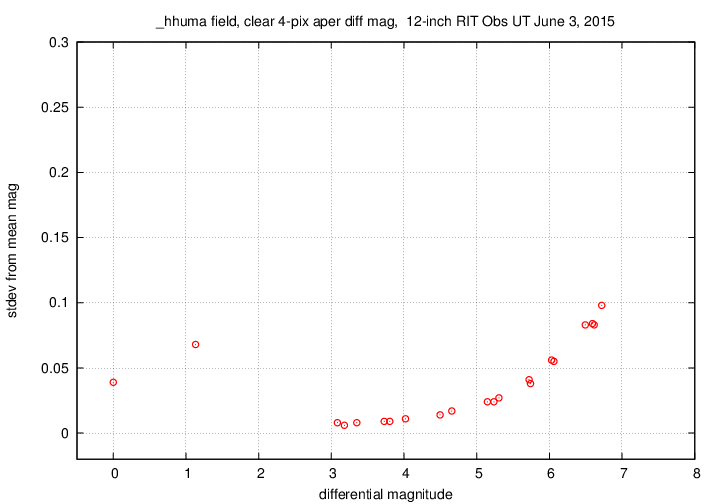
Image adjustment factor: note again the lack of clouds.
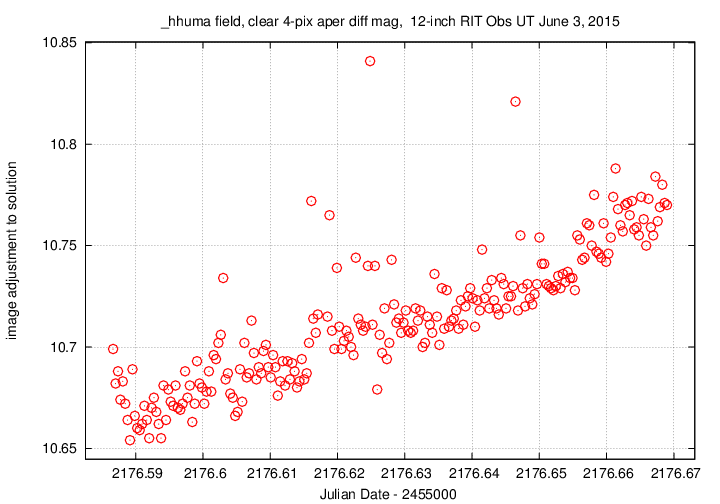
The target, shown in green, shows a steady increase in brightness during the two-hour run.
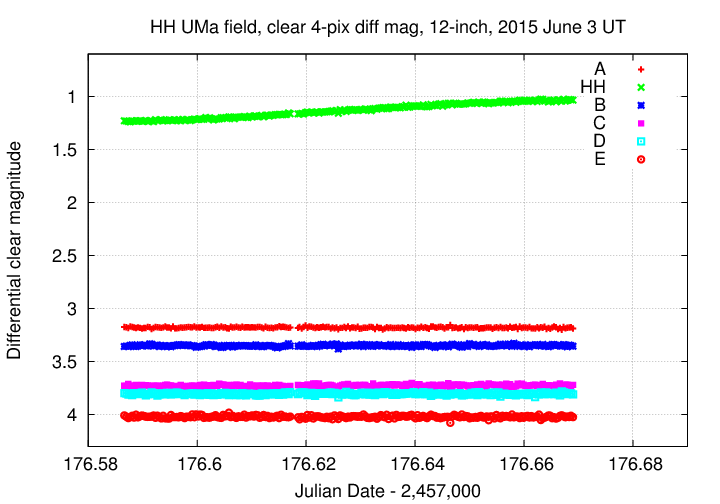
Here's a closeup, with star "A" shifted for easier comparison.
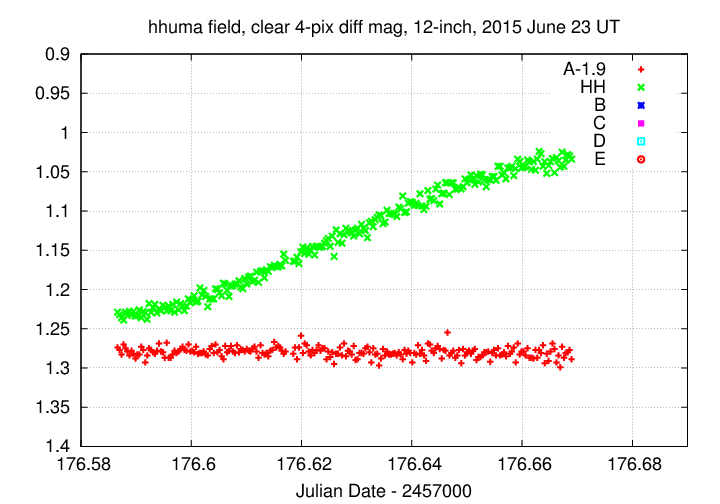
Last modified 6/03/2015 by MWR.